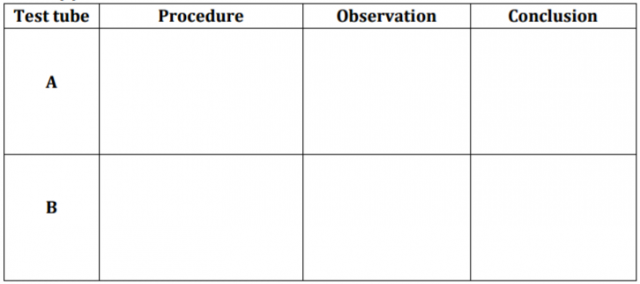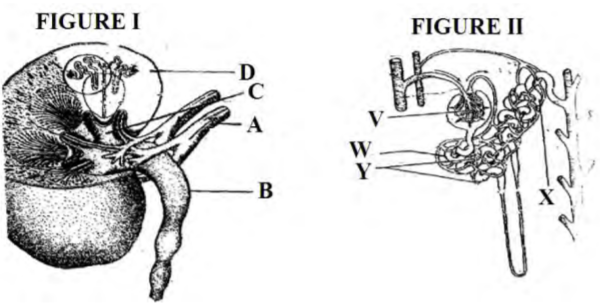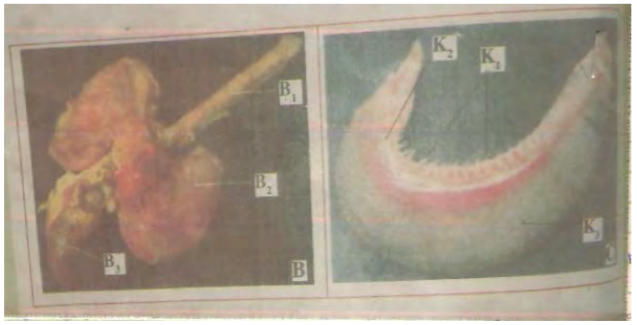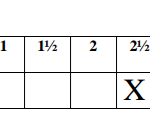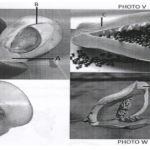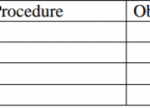KNEC KCSE Biology Paper 3 Question Paper / 2016 KASSU JET JOINT EXAMINATION
2016 KASSU JET JOINT EXAMINATION
Biology Paper 3
You are provided with Four Test-tubes label as A, B, C and D. You are
required to prepare the contents of test tube A, B, C and D as follows.
To test tube A add 2cm3 of solution R provided and test using the
provided reagent.
To test tube B add 2cm3 of solution T provided and test using the
provided reagent.(5 marks)
(a)
(b) To test tube C and D, prepare them as follows:
To test tube C add 2cm3 of R and 2cm3 of solution H provided boil it and
allow it to stand for 5 minutes.
To test tube D add 2cm3 of R and 2cm3 of solution T boil and allow it to
stand for 30 minutes. For both C and D test using the provided reagents
and tabulate your results below. (5 marks)
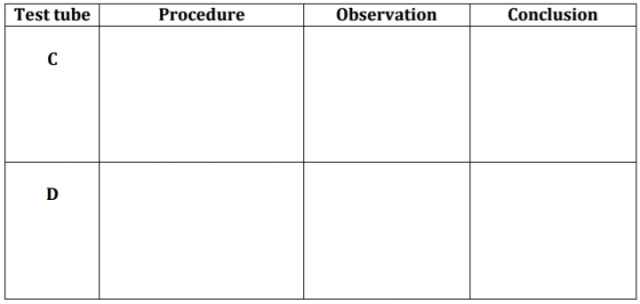
add solution R. Tie the remaining end and immerse it in a solution of
iodine solution in a beaker (50ml). After 2 minutes remove it from
the beaker and observe.
(i) What was your observation of the contents of the visking tubing
atthe end of experiment? (1 mark)
……………………………………………………………………………………………………………………
……………………………………………………………………………………………………………………
(ii) Account for your results in (i) above. (3 marks)
……………………………………………………………………………………………………………………
……………………………………………………………………………………………………………………
……………………………………………………………………………………………………………………
……………………………………………………………………………………………………………………
13 marks
Study the kidney diagrams below:
a) i) Name the part labeled A in figure 1 (1mark)
A ……………………………………………………………………….……………………
ii) Name the process that takes place in the parts labeledV.
V ……………………………………………………………………………………………
(1 mark)
b) State two homeostatic functions of the organ in the diagram above.
(2marks)
……………………………………………………………………………………………………………………
……………………………………………………………………………………………………………………
c) Explain what will happen to the process of urine formation in absence of
ADH. (3marks)
……………………………………………………………………………………………………………………
……………………………………………………………………………………………………………………
……………………………………………………………………………………………………………………
……………………………………………………………………………………………………………………
d) Below are photographs labeled B and C of organs obtained from different
animals. The organs perform similar functions. Examine them and answer the
questions that follow.
(i) Name the parts labeled B1, B2 and B3 in photographs B (3marks)
B1
……………………………………………………………………………………………………………………
B2
……………………………………………………………………………………………………………………
B3
……………………………………………………………………………………………………………………
(ii) Identify the parts labeled K1, K2 and K3 in photograph C (3marks)
K1
……………………………………………………………………………………………………………………
K2
……………………………………………………………………………………………………………………
K3
……………………………………………………………………………………………………………………
13 marks
Study the diagrams set A1, set E1, set M1 and set B carefully and answer the
questions below
(a) State the conditions under which each set up was grown.(3mks)
Set A1 ___________________________________________________
Set E1 ___________________________________________________
Set B ____________________________________________________
(b) (i) Name the phenomenon exhibited by seedlings in set E1(1mk)
_____________________________________________________________
(ii) Give a reason why plants exhibit the phenomenon named in (b) (i) above
(1mk)
_____________________________________________________________________________________
_____________________________________________________________________________________
(c) (i) Name the response exhibited by the seedlings in set B. (1mk)
____________________________________________________________________________
____________________________________________________________________________
(ii) Explain how the response named in (c) (i) above occurred
(2mks)
____________________________________________________________________________
____________________________________________________________________________
(d) (i) State the type of germination exhibited by seedlings in set A1 and set
M1. (2mks)
Set A1 ___________________________________________________________________________________________________________________
Set M1 ___________________________________________________________________________________________________________________
(ii) Give a reason for your answer in (d) (i) above (2mks)
Set A1 ____________________________________________________________________________________________________________________
Set M1 __________________________________________________________________________
(iii) State the mode of dispersal in set A above when mature.(1 mk)
__________________________________________________________________________________________
(iv) Name the type of fruit formed by M1 on maturity. (1 mk)
14 marks
